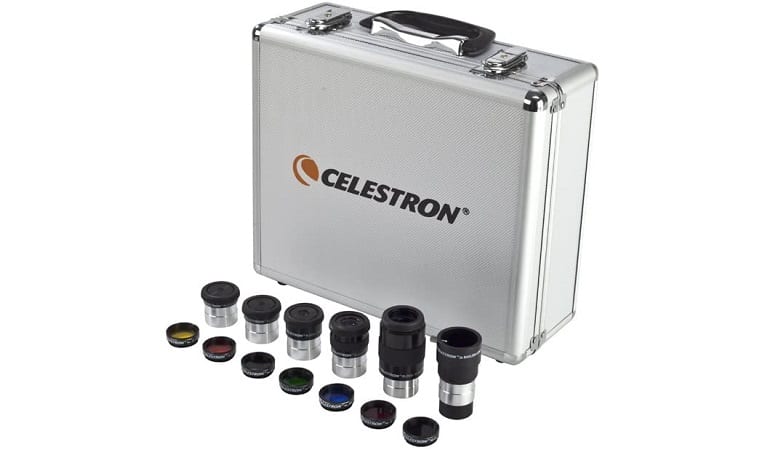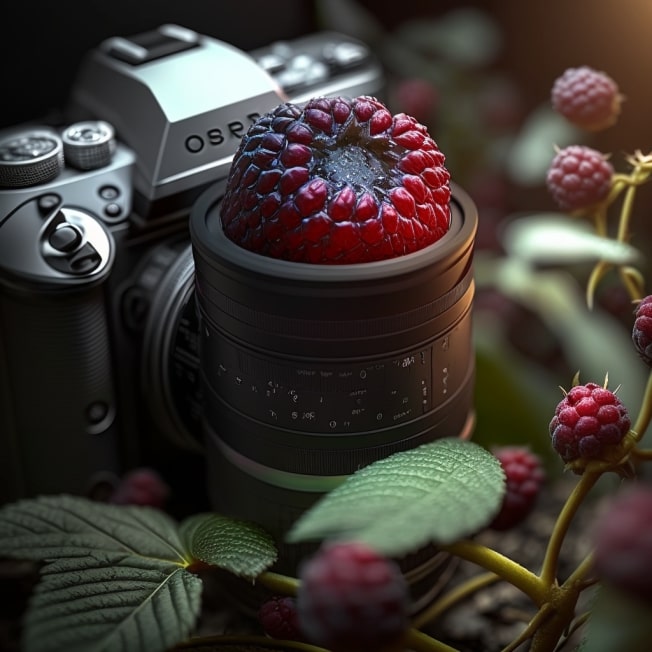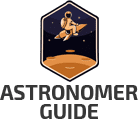We always talk about how important it is for the telescope that you use for astronomy and astrophotography to be able to collect enough light so that you’ll be able to better see the night sky and all its treasures.
But what about the telescope’s eyepiece?
This is a valuable component of the telescope that you should pay more attention to because it can influence how well you get to see what’s out there – and you should consider switching your current telescope’s eyepiece for a better one!
Why should you change your telescope’s eyepiece?
You might think you’re doing fine with your telescope’s original eyepiece, but you could be missing out on a better view. Many telescopes have eyepieces included in their purchase that are of average quality so they won’t get you very far.
By replacing these with eyepieces you buy separately, you could increase the range of what you get to see when you look at the sky through your telescope while boosting your astronomy experience as a whole.
If that sounds good to you, you might be wondering what type of eyepiece is worth your money.
Contrary to popular opinion, you don’t have to spend a lot of money on eyepieces that will help you to better enjoy looking into the night sky – here are five of the best telescope eyepieces 2020 reviews to help you make the perfect choice.
Now that you know the size, strength, and type of the best telescope eyepiece kits and products from the above table, we can take a deeper look at what each one has to offer you on your stargazing journey.
There are tons of features that you should look for in eyepieces that you might not even realize are important! We’ll start with an eyepiece kit that makes our number-one spot.
Best Telescope Eyepieces – Reviews & Buying guide for 2020
Best Telescope Eyepiece Kits: Celestron Eyepiece and Filter Accessory Kit
Need to breathe some new life into your telescope?
You’ll love this Celestron pack of eyepieces. It features high-end items as well as some useful extras that will inspire you to look up at the night sky a lot more.
Featured specs
- 5 Plossl eyepieces
- 6 colored filters
- 2x Barlow lens
Benefits
- This telescope eyepiece kit contains five quality Plossl eyepieces. These eyepieces have a range of power, from low to high. You’ll get the following in the pack: 6mm, 8mm, 13mm, 17mm, and 32mm. Plossl eyepieces are revered because they perform various tasks to improve the views of the sky, such as by creating sharper images.
- Every eyepiece is designed with a 52-degree field of view, which is considered to be good for general observation.
- You also get a 2x Barlow lens in the kit. This can be used with the Plossl eyepieces but you can use it with any other 1.25-inch eyepiece if you want to double the magnification of whatever you’re seeing. Its versatility is great because it feels like you’re gaining even more eyepieces in the pack!
- The pack includes six colored filters. These are important when viewing celestial objects because they will help to bring out their details much more, such as in the case of constellations or planets.
- You also get a moon filter, which is great to help you see the moon in better detail.
Drawbacks
- Some people who have purchased this kit have reported that the eyepieces don’t offer eye relief, especially when it comes to the ones with higher magnification. Eye relief is important in eyepieces because it makes them more comfortable to use. The eye relief is measured in millimeters and you want it as long as possible because this signifies greater comfort.
- Other people have reported that the pack doesn’t contain instructions, which can be a big drawback if you’re a beginner.
Extra Features
- To keep all your eyepieces and other items safe and to make it easier to carry them around, you’ll receive a hard-sided carrying case with your purchase.
Buying Advice
Although it might seem a bit expensive, This telescope eyepiece kit comes with many items that will be exciting for a beginner to learn about and experiment with, such as the color filters.
Runner Up: Gosky Premium Telescope Accessory Kit
This is a mammoth astronomy set that gives you everything you need to stargaze in one kit. Here’s what you should know about it.
Featured specs
- 15 items included in the set
- 5 multi-coated Plossl eyepieces
- 5 color filters
Benefits
- This is a kit that has 15 pieces which will boost your telescope’s performance.
- It comes with five multi-coated Plossl eyepieces that have the following sizes: 6mm, 8mm, 12.5mm, 20mm, and 40mm. These ensure you’ll have all the power you need to view the stars and planets.
- You also get five color filters (blue, green, yellow, orange, and red) that will make your planet-viewing adventures so much more interesting.
- There’s a nifty filter included in the set to help you better view details on planets such as Mars and Saturn. It’s called a polarizing filter and it works to highlight planetary features so that they can come to life.
- The pack includes 2x Barlow lenses. You can use these lenses on any 1.25-inch eyepiece to increase the magnification of what you see.
- You also get a T-adapter that you can use to attach a DSLR camera.
- A tele-extender is included. This will enable you to increase the telescope’s focal length when you use a DSLR camera with it.
Drawbacks
- The filters don’t come with any instructions or labels. This can make them tricky and complicated to use, especially for beginners.
Extra Features
- As with any astronomy kit, you want to be able to upgrade it and add to it in future, and this Gosky kit has ensured you’ll be able to do that. The silver accessory case that’s included in the pack stores your accessories but it also has extra space so that you can add items such as a diagonal, two extra eyepieces, and a laser pointer in future.
- The pack includes a moon filter. This has several benefits to make your moon viewing so much more enjoyable, such as by reducing glare, boosting the moon’s surface details, and enhancing contrast so that you’ll see the moon in a completely new and exciting way.
Buying Advice
This Gosky kit is your go-to astronomy set! It’s not currently available on Amazon. It’s one of the best budget telescope eyepieces and will ensure you have everything you need, whether you’re a beginner or have more experience with astronomy.
The attention to detail that you get from buying this kit, such as storage space for extra essentials you’ll use in future, is a great touch.
Alternative: SVBONY Telescope Eyepiece kit
These SVBONY eyepieces are eye-catching in their slick black and red design. Are they worth purchasing to boost your telescope’s performance?
Let’s see!
Featured specs
- Four eyepieces of various sizes included
- 68 degree view
- Green film optical glass
Benefits
- This set includes four eyepieces of the following sizes: 6mm, 9mm, 15mm, and 20mm.
- It offers a wide field of view that’s 68 degrees. A wider field offers better views!
- The lenses are fully multi-coated.
- The broadband green film optical glass boosts the light quantity so that objects you see with the telescope are sharper.
- These eyepieces have good color correction as well as contrast so that they’ll improve your view.
- They come with a fold-down rubber eye guard that’s soft and comfortable. These are great to use if you wear eyeglasses but they also prevent stray light from ruining the view.
Drawbacks
- People who have purchased these eyepieces have reported that if you want to use a Barlow lens with them you probably won’t be able to do so with a cell phone or camera mount because the eyepieces are really heavy.
- Sometimes chromatic aberration is caused if the object you’re viewing is in the center of, or to the side of, the scope’s view. Chromatic aberration is something photographers dread because it’s when a lens can’t bring all color wavelengths to the same focal plane and/or when color wavelengths are focused at different places in the plane. The result is blurriness or edges of color around objects.
Extra Features
- We’ve already mentioned that these eyepieces look slick, but their black anodized aluminum housing serves a good purpose – they prevent the scattering of light.
Buying Advice
While they don’t have many of the frills you’ll find in other telescope eyepiece kits, they do offer solid benefits and have high-end features that will take your telescope up a notch.
Best Wide Field of View Telescope Eyepiece: Orion 8828 Telescope Eyepiece
This eyepiece is perfect for wide fields of view, which are important with astronomy because they enable you to see large celestial objects, like the Pleiades star cluster or Andromeda Galaxy. Sounds exciting?
You bet! Here’s what to know about it.
Featured specs
- 32mm eyepiece
- 70-degree angle
- Rubber eye guard
Benefits
- This is a 32mm telescope eyepiece that has a super-wide angle of 70 degrees. The manufacturer claims that this will make you feel like you’re lost in space because you’ll be so immersed in the stars.
- It comes with five multi-coated lens elements constructed with high-index glass. These create sharper images and high contrast.
- The parfocal design of this lens offers more comfort and makes the eyepiece easier to use. This is because a parfocal lens stays in focus even when you change the magnification.
Drawbacks
- One of the biggest drawbacks of this eyepiece is that it offers limited eye relief.
- Some people who have purchased this eyepiece have reported that it contains a bit of coma at the edges. Coma is when the stars show up as comet-shaped – their brightest part is directed towards the center of view. This can be quite annoying if you take pictures of deep space.
Extra Features
- This wide-angle eyepiece comes with a fold-down rubber eye guard to increase your comfort. People who have purchased this eyepiece have reported that it allows you to enjoy a wide field of view without smudging the lens, which makes it much more pleasant to use.
- It also has barrels that are threaded so that they can be used with two-inch Orion eyepiece filters, therefore giving you the chance to do even more with it.
Buying Advice
Feel immersed in stars with this Orion eyepiece that will make you feel like you’re in a galaxy in space. It is one of the best cheap telescope eyepieces you can find.
Best 1.25” Telescope Eyepiece: Celestron Zoom Eyepiece for Telescope
It’s common for many eyepiece barrels to be 1.25 inches in size. But this one by Celestron ticks all the boxes of what you want in a 1.25-inch telescope eyepiece. Let’s check it out!
Featured specs
- Can be used with any telescope that’s compatible with 1.25-inch eyepieces
- 8mm to 24mm focal length
- Rubber eye cap
Benefits
- This eyepiece enables you to zoom into the celestial view fast and effectively without having to put a different lens on your telescope.
- It’s versatile because you can use it on any telescope that makes use of 1.25-inch eyepieces.
- Another thing that makes this eyepiece so versatile is that you can use it for different activities, thanks to its field of view. By working within the 40 to 60 degree range, this eyepiece enables you to view terrestrial sights as well as many objects in the night sky, such as the planets and moon.
- It’s a multi-coated premium eyepiece that can zoom in to a focal length of up to 24mm.
Drawbacks
- You might find it a bit frustrating that the eyepiece doesn’t alert you when a new focal length is used, as the transition from one to other is very smooth, perhaps too smooth!
- The focal lengths aren’t parfocal, meaning you need to adjust the focus of your telescope whenever you increase or decrease the magnification.
- People who have purchased this product have reported that it’s not easy to find objects at 24mm and also try to zoom into them. This can make using the eyepiece a bit clumsy at times.
Extra Features
- This eyepiece offers an affordable way to be able to switch from one magnification to another, which proves valuable when using a telescope.
- This eyepiece has a rubber eye cap that makes it much more comfortable to use. If you wear glasses, you can simply retract it.
- You get wonderful eye relief when using this eyepiece because its eye relief is between 15mm and 18mm. This is considered to be long eye relief, which is more comfortable than shorter types.
Buying Guide
This zoom eyepiece will make your time spent stargazing feel much more enjoyable because you won’t have to keep changing eyepieces. It’s a valuable purchase because it enables you to view planets and deep-space objects, such as star clusters, with ease.
Telescope Eyepiece FAQ
If you want to purchase an eyepiece or eyepiece kit for your telescope, chances are you have some questions about eyepieces in general. Let’s check them out so you can find the best product for your needs and also learn about the best way to use it.
What does the eyepiece do on a telescope?
A telescope eyepiece is the part of the telescope that brings all the light that the telescope has collected to your eye. It therefore has a crucial role to play in what you get to see when you point your telescope to the sky.
Don’t underestimate the value of a good eyepiece as it can totally change how you experience using a telescope. When you replace a low-quality eyepiece with a higher-end one, the difference can be amazing. In this way, the eyepiece can feel like you’ve given your telescope a completely new lease on life!
The sad reality is that even if you have a telescope that has a high-quality mirror or lens on it, it won’t be able to acquire exceptional focus unless you use a high-quality eyepiece on it. Period.
This feature is not only important if you’re using your telescope to view celestial objects but it’s also important if you’re keen on taking images of what you see so that they will be of excellent quality and free of issues such as blurriness.
There are some valuable eyepieces you should own if you want to take your astronomy to the next level. These include:
A low-power, wide-field eyepiece
This type of eyepiece will enable you to see large celestial objects. It will also mean you can frame many objects in one view, while locating objects in the sky before you switch to a higher magnification very easily.
An example of a low-power eyepiece is one that’s got a 40mm focal length.
A medium-power eyepiece
This brings details out to shine, like when you view galaxies and star clusters. It can also increase the magnification of small objects.
On the other hand, using more magnification will make the background of the sky much darker to boost the contrast in the image so you can better see the celestial gems. A 32mm focal length eyepiece will be considered one with medium power.
A high-power eyepiece
This type of eyepiece will ensure you can see more details, but it’s especially useful for seeing the moon and planets. A high-power eyepiece will have a lower focal length, such as 15mm.
What to consider when buying a telescope eyepiece?
Based on the above, you might be wondering what you should look for in a quality telescope eyepiece. Here’s a list of important elements that you should note so that your telescope will work better than ever before.
Focal Length
Eyepieces have different focal lengths, such as 10mm or 25mm. Focal length is important because it’s basically the distance from the main part of the eyepiece where rays of light converge to a single spot.
When combined with the focal length of your telescope, this determines your magnification.
It’s probably a good idea for you to start with a focal length of about 25mm to help you see the celestial objects in your field of view and then you can upgrade to a higher power, such as 15mm.
If you see improvements, then you should move to a higher power again. Doing this enables you to find what Opt Corp calls the “sweet spot” of visible details, brightness, and image scale.
Long/Short Eye Relief
Eye relief is an important feature to look for in a telescope eyepiece.
If the relief is low, such as 10mm, then wearing eyeglasses while looking through the telescope won’t give you the complete view in front of you simply because the glasses extend beyond 10mm in front of your eyes.
Even if you don’t wear spectacles, not having good eye relief can make using the eyepiece exhausting. Choose an eyepiece with at least 15mm so that it will be more comfortable.
An example of an eyepiece that has good eye relief is the Celestron Zoom Eyepiece on our list of reviews, which is said to have between 15mm and 18mm of eye relief.
Apparent Field Of View
The Apparent Field Of View of your telescope eyepiece is the angular diameter of light that you can see via the eyepiece. A good rule to follow with this feature is that versatility is key.
You should aim to use anything lower than 40 degrees (which is narrow) to view the moon or planets, while 80 degrees (which is wide) and higher is suitable for seeing deep-sky objects, such as galaxies.
What is a Barlow lens?
As we’ve seen in the best telescope eyepieces reviews, some eyepiece kits will also contain a Barlow lens. Why is this such a revered lens in astronomy?
Here’s the lowdown.
A Barlow lens has a concave lens that’s put between the telescope’s objective lens (or mirror) and the eyepiece. This is so that the lens can achieve its main function: magnification! A Barlow lens essentially helps to magnify whatever you’re looking at by double or even triple.
Although you might think that Barlow lenses are similar to zoom lenses, there are some crucial differences. For starters, Barlow lenses have a magnification level that’s fixed.
They also provide a smaller field of view as compared to zoom lenses. Another difference is that Barlow lenses are lighter than zoom lenses, as the latter tend to have a blend of multiple glass elements which can make them heavier.
One of the best things about using a Barlow lens is that by magnifying what you see, it’s like you’re increasing the number of eyepieces you own.
This also has a practical convenience – you don’t have to switch to a different eyepiece when you want to magnify what you’re seeing through the telescope.
What is the difference between 1.25” eyepiece and the 2” eyepiece?
Earlier, we talked about how 1.25-inch eyepieces are sort of the standard, but how are they different when compared to two-inch eyepieces?
First of all, you’ll find that 1.25-inch eyepieces will be found on entry-level telescopes but you can use 1.25 or 2-inch eyepieces on intermediate and advanced telescopes, thus making them more versatile.
Here are some other differences between 1.25-inch and 2-inch eyepieces.
1.25-inch eyepieces are lighter and smaller while also being less expensive. We can see this with the Celestron 1.25” Eyepiece and Filter Accessory Kit that we reviewed in our list of best quality telescope eyepieces.
These eyepieces also provide you with a bit more versatility, such as when it comes to short focal lengths.
2-inch eyepieces, on the other hand, have large ocular lenses which can be more comfortable to use.
They also give you a wider apparent field of view when focal lengths are greater than 32mm. However, you can also make use of focal lengths that are greater than 40mm, which is good if you want to find celestial objects.
There’s really no right or wrong when choosing between the two types of eyepieces. It really comes down to your personal preferences.
What is the use of a color filter?
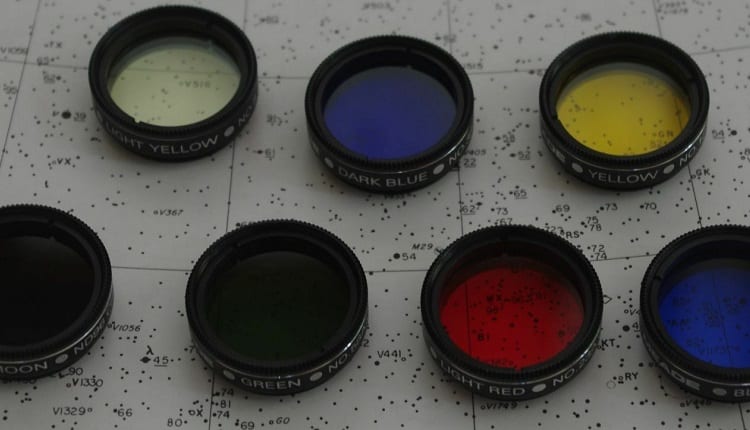
As we’ve seen in our list of the best value telescope eyepieces, some eyepiece kits come with color filters included, sometimes five or six. But what does a color filter actually do?
You might be wondering this if you’re new to using a telescope.
Put simply, color filters help you to see more details when looking at the moon and planets. Filters of different colors will help you to see different things and different filters are meant for viewing different planets.
For example, a yellow filter on your eyepiece can help you see Mars’s craters in more detail while increasing the details you will be able to see on Jupiter’s belts. It can also boost the orange and red colors on both Saturn and Jupiter.
On the other hand, a red filter will help to create more contrast in the dust clouds on Mars, and it has the benefit of decreasing light glare when you view Venus. This shows that color filters can have purposes other than helping you to view planets in greater detail!
What about other filter colors?
- Orange filters can be used to boost contrast between dark and light areas, and they also detect dust storms on Mars as well as sharpen Jupiter’s contrast.
- Blue filters bring out details in atmospheric clouds and also darken any red areas on Mars. Dark blue filters can be useful when you want to boost contrast, such as on planets like Venus and Jupiter when you want to see more details.
- Violet filters. These are mainly reserved for larger telescopes. Violet filters boost contrast in celestial objects such as Saturn’s rings, but they can also be useful when you want to decrease glare to better see planets such as Venus.
Conclusion
You already own a telescope, but are you sure it’s allowing you to see the most amazing views of the sky?
If not, then you need to upgrade your telescope with the use of an eyepiece.
In this article, we’ve featured the best telescope eyepieces for the money that you should purchase, looking at important information such as their pros, cons, and cost, so you can choose the one that will take your astronomy and astrophotography to the next level.
We’ve also featured some important information about eyepieces, color filters, and more, so that you’ll know which items to look for in your telescope eyepiece kit and which ones you don’t need during your next backyard stargazing hunt!
